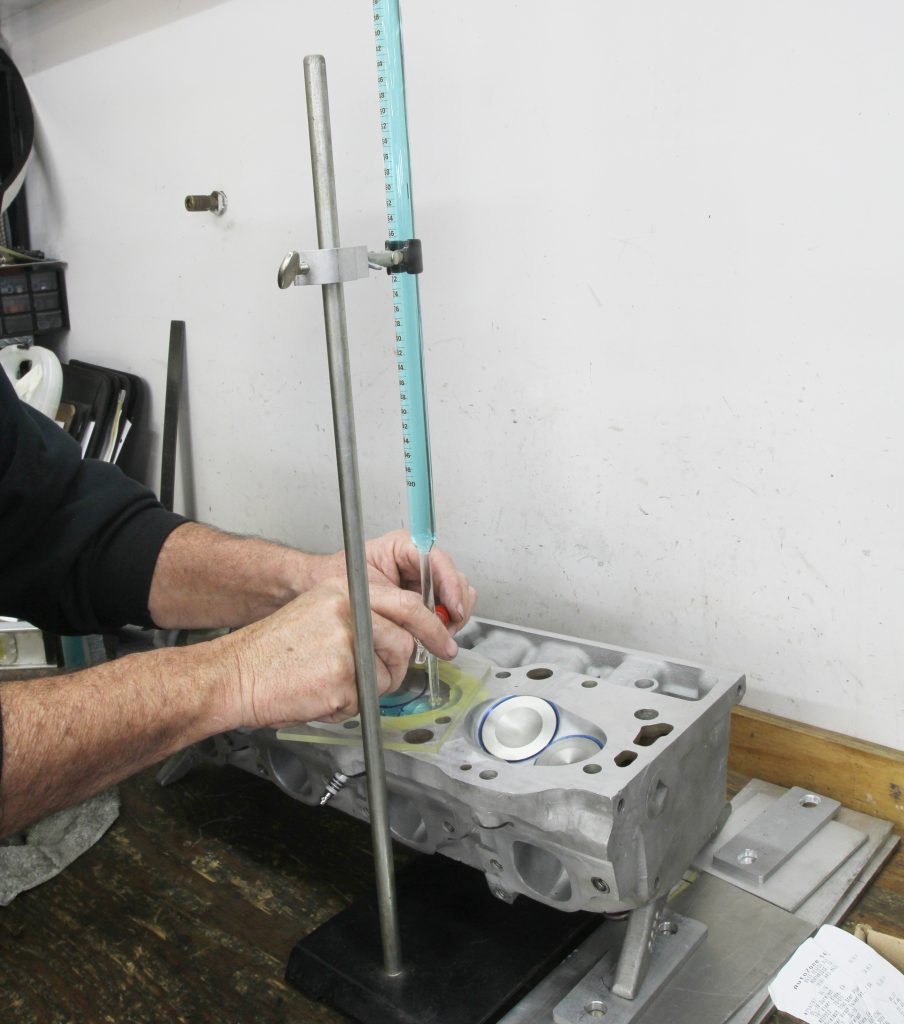Can I put a set of open chamber iron heads on my 396ci big block Chevy? The engine originally used a set of closed chamber oval heads but instead I’d like to run a set of rectangle port heads on the engine. I’ve been told that this isn’t possible but I thought I’d ask.
P.D.
The simple answer is yes, an open chamber big block head can be used on a closed chamber engine. But there are ramifications to this effort that are important to clarify because over the years, Chevrolet employed several different open chamber heads. Each of these heads has its own specific chamber volume that will directly affect your compression ratio.
So while the overall answer is yes, it comes with a few caveats that we should investigate more closely.
Closed Chamber vs. Open Chamber Heads
This first demands a short course in closed chamber versus open chamber heads. The first version of the big block Chevys appeared in production in 1965 used in passenger cars, a few obscure Z-11 Chevelles, and mostly in the Corvette. These early closed chamber heads came in several combustion chambers sizes. The 325hp 396 and 390 hp oval port 427 engines used a 97cc to 98cc chamber while the 375hp Z-16 Chevelle and the 425hp 396 in the Corvette used a larger 109cc chamber heads. These were both closed chamber designs
By 1967, the 375hp 396 and basic oval port engines opened the chamber size to 107cc along with variations with a tighter 101cc volume. By 1969 the sizes were evolving again with what has been referenced as a semi-open chamber head at 112cc. Just to make specific year differentiations hazy, Chevy built an aluminum rectangle port head in 1969 for the 430hp ZL-1 Corvette with a 118cc open chamber configuration.
The years 1970 through 1975 pushed emissions to drive chamber volumes even larger as compression ratios plummeted. Chamber volumes varied between 108cc through 113cc and even 118cc.
Some Combustion Chamber Math
Now, if we converted from a closed chamber 396 with a 98cc chamber to an open chamber from 1975 with 118cc chambers, you don’t have to be a physics professor to know that the engine will suffer a major loss in compression ratio. But let’s do the math to see how much that will affect the engine.
Let’s use a 10.25:1 compression closed chamber 396 as our example. With a 4.094 inch bore, 3.76 inch stroke, a 21cc domed piston at 0.010 inch below the deck, a 0.041 inch head gasket and a 98cc chamber, the free online Summit Racing compression ratio calculator tells us the compression would compute out to 10.21:1. That’s close to the claimed compression ratio of 10.25:1 for a 360 hp 396 in 1966.
Now if all we do is bolt on an open chamber 118cc big block head, the compression plummets to 8.51:1. That’s a precipitous drop of 1.6 points in compression and certainly not a good thing.
Now, alternatively, if you were to choose an earlier open chamber big block head with an in-between 108cc chamber, the compression ratio would still be lower but computes to a slightly better 9.28:1.
As you can see, there is not just one size closed chamber or open chamber head in the big block arena. With multiple chamber sizes, your best approach would be to do some research on the exact casting number head you want to install and then run through the compression ratio calculator to see where it might land. This way you will have a great idea of which cylinder head will produce the compression ratio you desire. As with many simple questions, the answers are often a little more complex.


Thanks for the update I’ll keep you posted
Very good article thank you